Social media presents businesses with a wide array of opportunities. With approximately five billion users, social media platforms are excellent for creating awareness and lead generation.
A staggering 68% of marketers credit social media marketing for successful lead-generation efforts.
But how do you leverage social media to generate quality leads? How do you ensure your strategies will deliver the results you are looking for?
In this article, we’ll discuss social media lead generation and offer five tips for you. Let's dive in.
Skip to:
What Is Social Media Lead Generation?
Social media lead generation refers to acquiring fresh and relevant leads from social media platforms such as Facebook, Twitter, Instagram, LinkedIn, and TikTok.
It entails carrying out marketing strategies to get people to share information about themselves (typically their email address) for later follow-up.
To encourage people to share their personal details, marketers use lead magnets.
Essentially, they provide free reports, gated content like eBooks and white papers, training resources, and other incentives in exchange for the prospect’s contact details.
Social media lead generation strategies can be a powerful tool for your business, but don’t just rely on them for business growth. Complement them with public relations that also focus on improving your brand reputation.
With PR, you can help ensure those leads convert into customers. Make sure the PR agency you choose specializes in your niche for the best results.
So, if you’re a restaurant, look for a reputable food PR agency. If you’re a company that sells building materials, an agency specializing in PR for the construction industry is your best bet.
5 Social Media Generation Tips
Now that you know the importance of social media lead generation, here are tips you should follow to ensure the results you’re looking for:
1. Create compelling content
Content is king, and this is not about to change anytime soon.
Compelling content helps you attract potential sales leads. If they see content tailored to their needs and preferences, they’ll naturally stop to check it out.
So, how do you create great content on social media? Ensure it is engaging and valuable.
Think attention-grabbing promotional video posts on TikTok, Instagram Reels and live streams, thought leadership content on LinkedIn, and user-generated content.
But how do you ensure your content is all these things? After all, what may be engaging and valuable for some potential customers may not be so for others.
This is why it's advisable to create audience personas first. Audience personas are fictional representations of your ideal audience.
They can help you understand your target market or ideal customer better regarding their demographics and preferences.
This information will help you design relevant content for the right platforms. This is what an audience persona looks like:
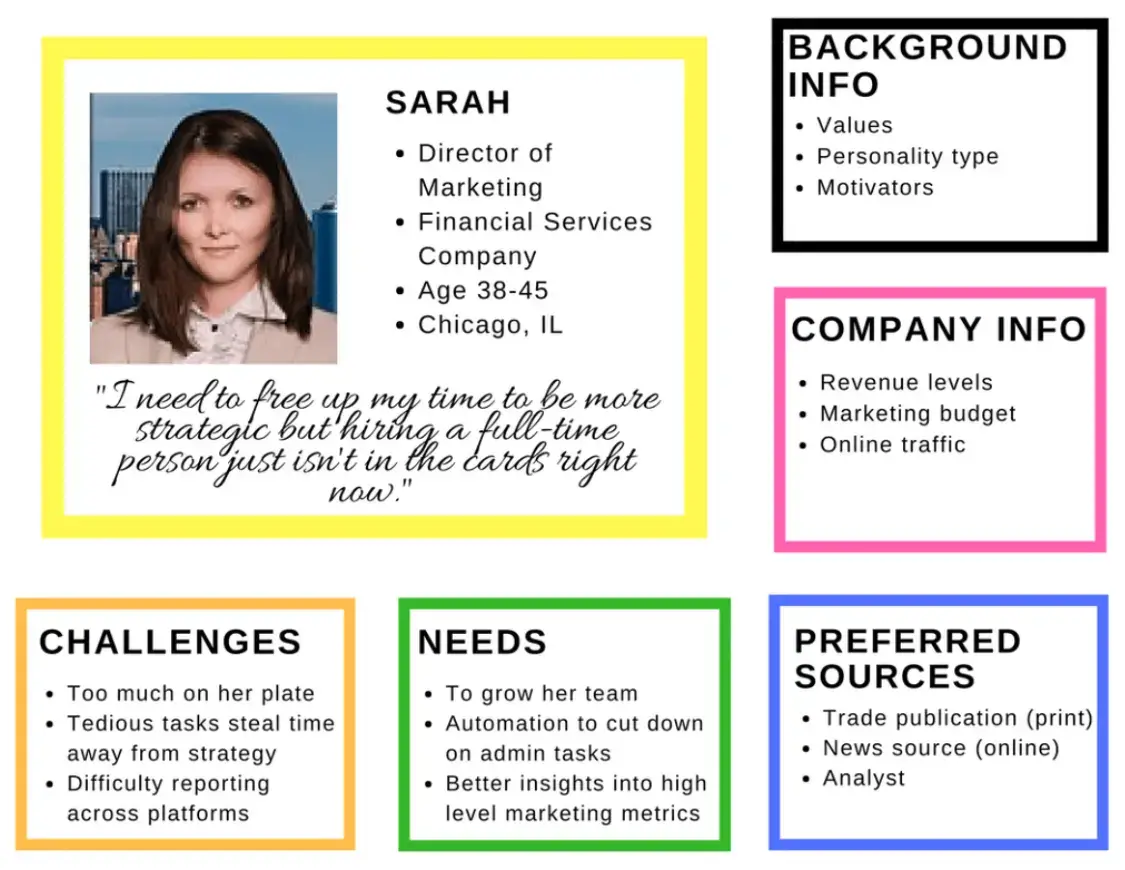
Check out your social platform's built-in analytics tools to get this information. Also, send surveys to your target audience to collect just as valuable data for your personas.
Now, all that said, let’s take a look at a good example of compelling social media content.

This Nike post above ticks all the boxes for sports fans. Just look at the number of likes and comments it garnered.
All this isn’t to say you should focus solely on creating social media content. You can create compelling content using other platforms and then share it on social media.
For instance, why not create podcasts? You can easily host them on podcast hosting platforms and then share them on social media channels.
A popular tool is Buzzsprout. But if that’s too expensive for you, try Buzzsprout alternatives that offer similar features but are cheaper.
Whatever type of compelling content you create for social media or share on these platforms, just make sure you tell your viewers what you want them to do after viewing this content.
Since we’re talking about lead generation, you’ll probably want them to download your podcast or eBook, sign up for your free training, or directly subscribe to your newsletter.
Whatever the case, have a clear call-to-action (CTA).
2. Optimize your social media profiles
Your social media profile is usually one of the first things active users look at. That’s why you need to ensure it’s optimized.
An optimized profile creates a great impression, prompting social media users to continue exploring your profile or go to your website, where they might share their contact information in exchange for your valuable content.
Here are some useful suggestions on how to optimize your social media sites.
- Provide clear and detailed contact information: Include your location, contact details, and a link to your website.
- Add a description of your business: Explain what your business is about.
- Ensure branding: Social networking sites offer a unique opportunity to customize your profile. You can relate your brand story more authentically by incorporating specific images or your profile banner into your social media page design. If you have multiple social profiles, ensure your branding is consistent throughout.
- Include relevant keywords and hashtags: This will help ensure your profile appears when someone makes a relevant search query on the social platform and will also help ensure you reach a wider audience.
All that said, here’s an example of an optimized social profile:
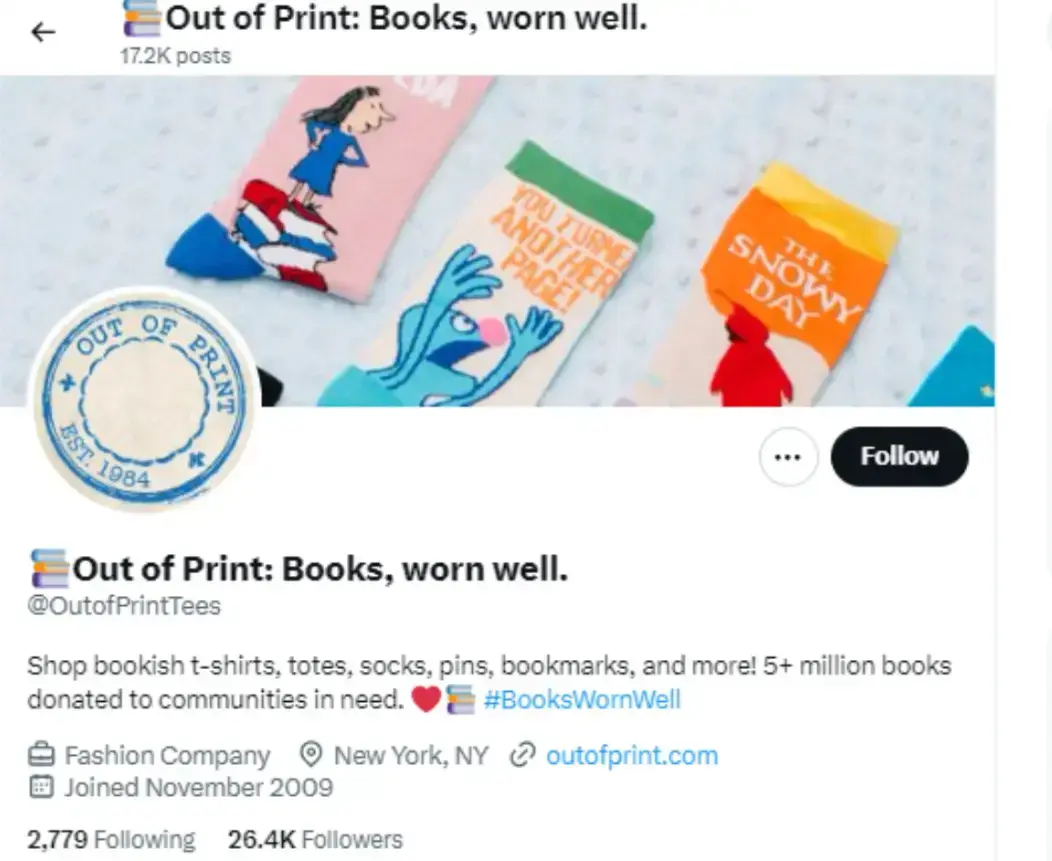
Out of Print's Twitter (X) bio explains what it sells and includes relevant keywords and a hashtag. Notice that its profile also has a logo and a background image that showcases its personality.
3. Create a dedicated landing page
A landing page is the web page users “land” on upon clicking on a social media post or ad, email, or another digital location.
So, in this case, people land on your landing page after they click on your social media advertising or post CTA.
Why should you have a dedicated landing page? Because it will increase the chances of consumers taking your desired action to, ultimately, become leads.
A landing page is specifically designed to persuade users to take a single action. See this example:
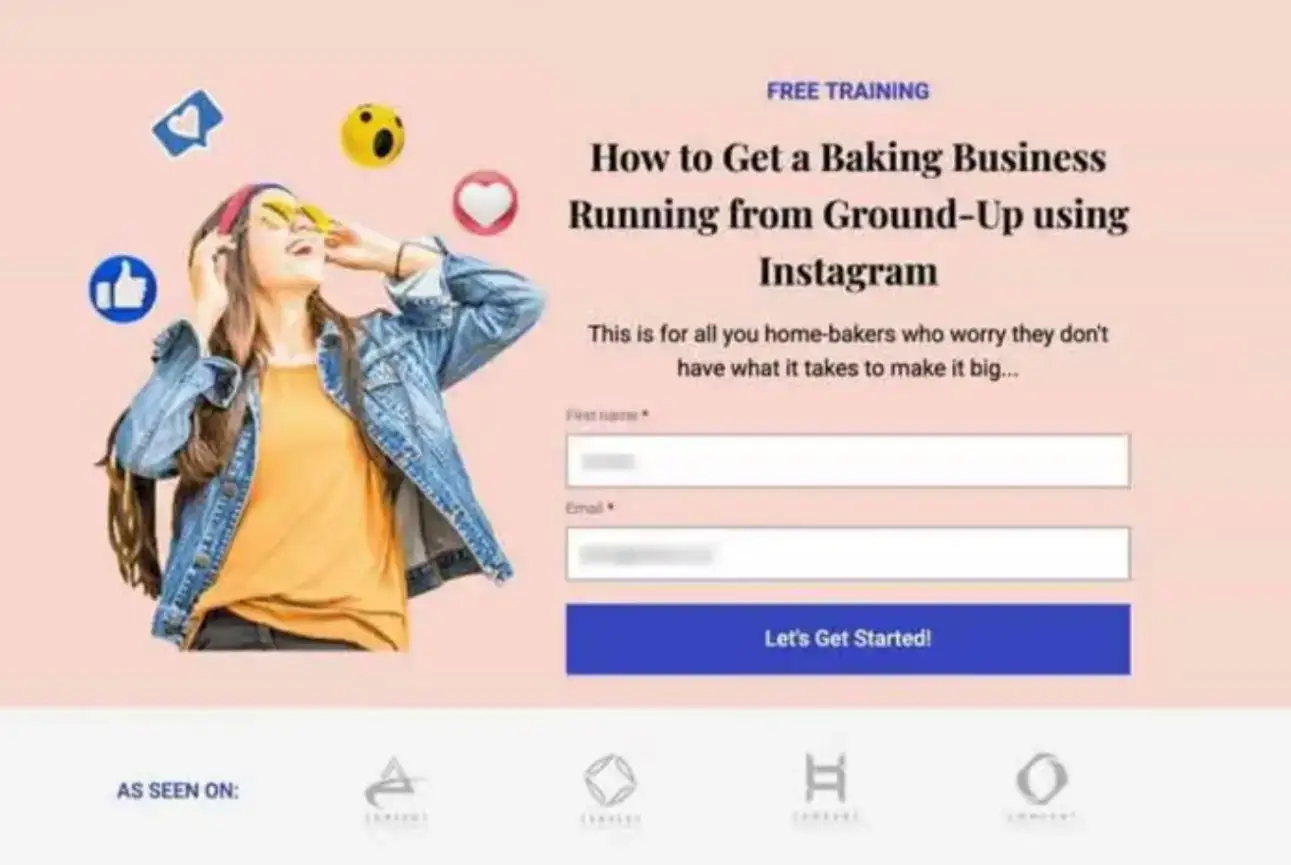
You can create your landing page using a landing page builder. For the best results, follow these tips when doing so:
- Keep the design simple and easy to navigate.
- Don’t ask for too much information. The recommendation is to have only up to seven form fields.
- Have an attention-grabbing headline that clearly communicates your offer’s key benefit
- Make your landing page CTA stand out by using a color contrasting with your background. Also, include white space around your CTA button.
The landing page above is an example of one that ticks all the boxes.
It has a simple design, an attention-grabbing headline highlighting the benefit of the lead magnet, and an easy-to-fill short opt-in form. The CTA button stands out as well.
Just keep testing and refining your landing page to see what generates the most leads.
4. Leverage influencer marketing
Influencer marketing is excellent for social media lead generation. Influencers can help promote your brand and attract more eyeballs to your social media pages and site, where you can convert them into leads.
A staggering 60% of consumers trust what influencers say.
Here’s an example of a brand/influencer collaboration. GymShark partnered with fitness influencer Soph Allen to promote its products:
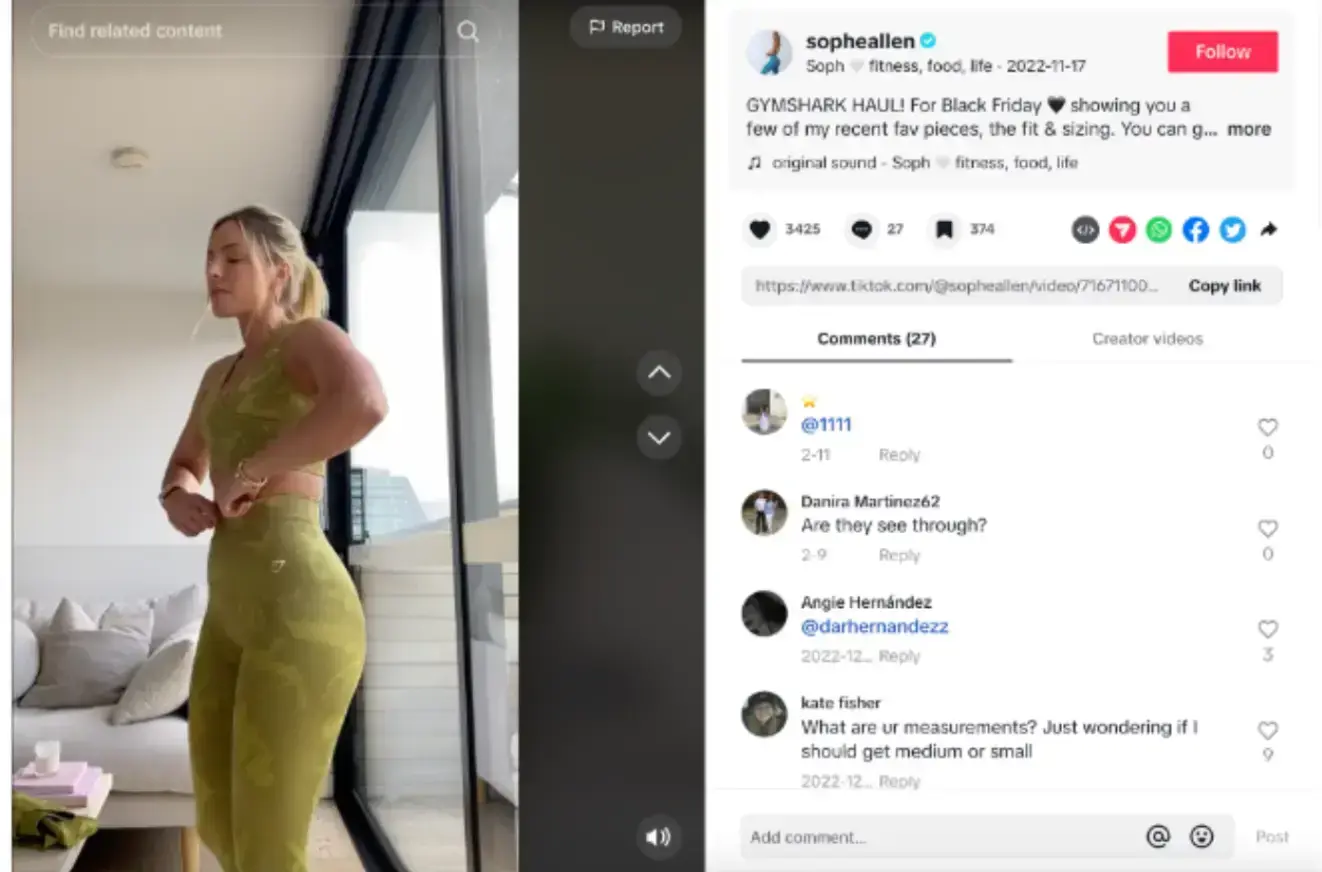
You can use influencer marketing platforms to find social media influencers or simply do a quick Google search. See what happens when I search for fashion influencers:
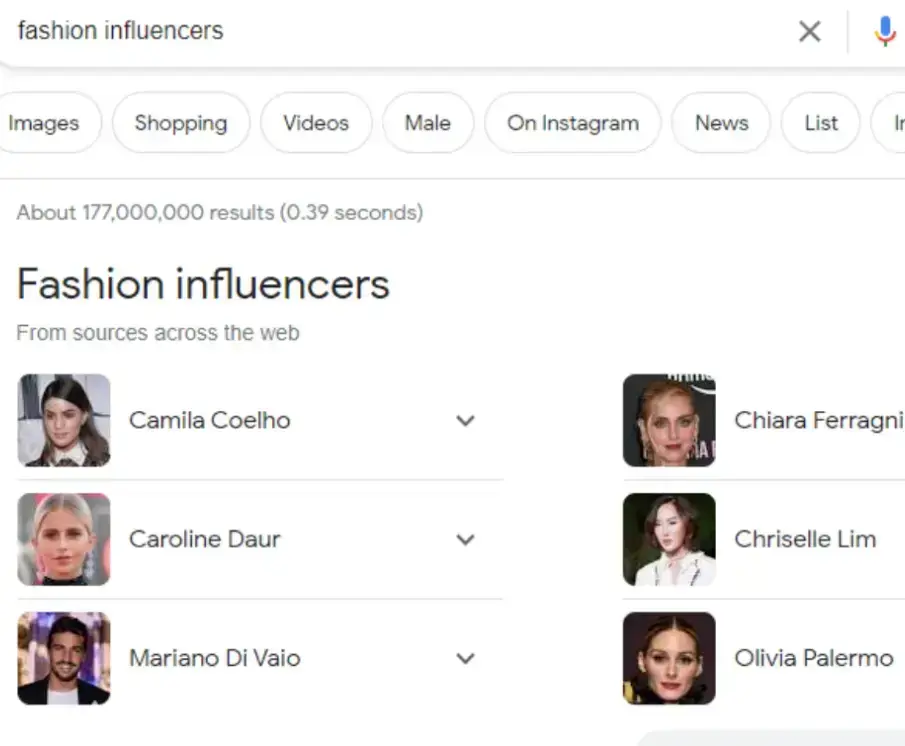
Make sure you choose influencers whose values align with your brand’s.
It wouldn’t make sense to partner with an influencer who loves meat if you’re a brand that sells vegan products and believes vegan is the way to go.
Also, opt for micro-influencers (those with 10,000 to 100,000 social media followers) instead of macro or mega-influencers who have between 100,000 and one million followers.
Since they have fewer followers, micro-influencers tend to have a more engaged following.
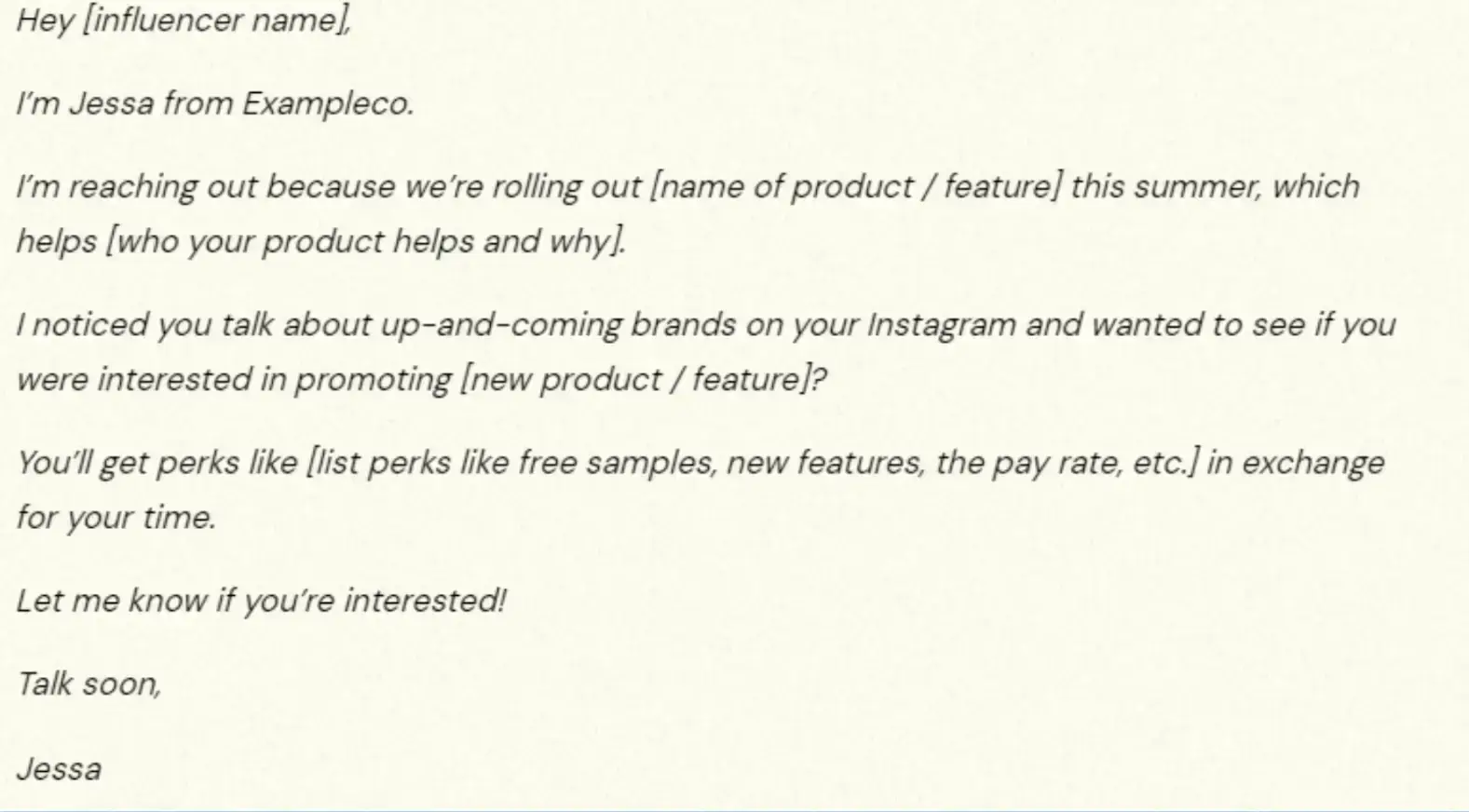
Once you’ve chosen your influencer, send them a personalized pitch. Make sure you highlight the benefits they can get from collaborating with you. You can get inspiration from the pitch above.
5. Run social media contests
Consider organizing social media contests on social media. The more fun and creative your contests are, the more potential leads for you.
In the US, nearly 55 million participate in these kinds of campaigns.
Then, there’s the fact that these campaigns can easily increase a brand’s followers by 70%.
You can reach an even wider audience, too, with 62.13% of participants sharing them with friends to encourage them to participate. Here are some campaign ideas:
- Have followers submit short videos of them using your products, then reward the user with the most original or creative clip. People love sharing videos; up to 92% of internet users will share video content with their friends. This can help bring your brand to new audiences.
- Request your followers to propose creative captions for a post on Instagram, then choose the most hilarious.
- Tag-a-friend contests - invite followers to like, comment, and tag their friends in a post for a chance to win one year’s supply of your newest product.
Whatever campaign you decide to run, ensure you require participants to share their email addresses (your purpose is to generate leads, after all). You can make it a criterion to enter the contest like the brand below did:

Here’s another option: Why not ask for their email addresses so they can be notified of the contest winners?
Make sure you check your campaign results against your set key performance indicators. This will help you determine what works and what doesn’t so you can improve your future social media campaigns.
Conclusion
Social media can help you generate leads for your business. But you need to be strategic in your approach for the best results.
You learned five tips to follow to ensure effective social media lead generation. Create compelling content and post it on your social platforms.
Optimize your social profiles and create a dedicated landing page. Don’t forget to leverage influencer marketing. Influencers can help you reach an even wider audience. Finally, run social media contests.
Follow these tips, and your lead-generation efforts will be successful. Ultimately, you can achieve business growth. Good luck!

Author Bio
Nico is the founder of Launch Space. The company works with enterprise SaaS clients, helping them scale lead generation globally across EMEA, APAC, and other regions.


